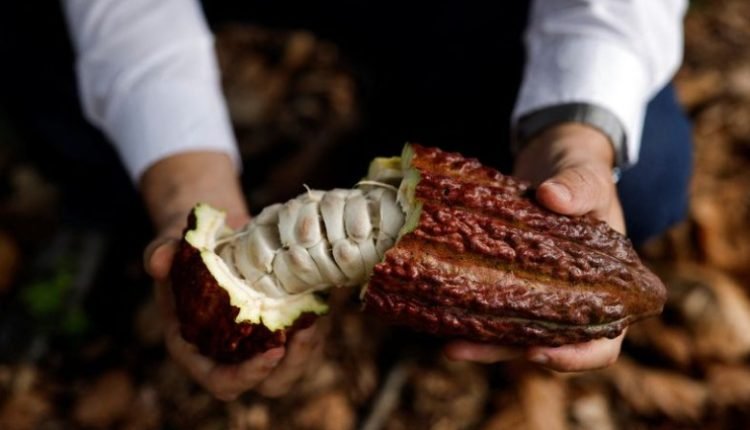Cocoa Kings: Who Leads the World in Growing the Beans Behind Your Chocolate Fix, and Where Does India Stand?
As West Africa continues to dominate global cocoa production, southern India is quietly nurturing its own “farm-to-bar” revolution — a blend of tradition, sustainability, and sweet potential.
The Sweet Beginning: Where Chocolate Really Comes From
Have you ever wondered where that chocolate bar in your hand truly begins its journey? Not in a glossy factory, but on humid, shaded tropical farms where cocoa pods ripen under the sun. These vibrant pods, filled with bitter-sweet beans, are the foundation of a multi-billion-dollar global craving.
While chocolate is consumed worldwide, cocoa — its essential ingredient — is grown only in a handful of tropical nations. And surprisingly, India, despite its rich soils and ancient farming traditions, remains a minor contributor to the global cocoa story.
Côte d’Ivoire: The Cocoa Powerhouse of the World
At the top of the list stands Côte d’Ivoire, the undisputed leader of global cocoa production. The West African nation contributes nearly one-third of the world’s total cocoa supply, making it the economic backbone of the country.
Cocoa farming in Côte d’Ivoire is not merely an agricultural activity — it’s a national livelihood. Millions depend on it for employment and income, and the country’s economy thrives on cocoa exports. However, this success comes at an environmental cost: deforestation and soil degradation are major consequences of expanding plantations.
Despite these challenges, the Ivorian cocoa sector continues to define global prices and supply trends — underscoring Africa’s centrality in the global chocolate chain.
Ghana: Africa’s Other Cocoa Titan
Just beside Côte d’Ivoire, Ghana remains the second-largest cocoa producer. Together, these two African neighbours account for over half of the world’s cocoa output, giving the continent unmatched influence over the chocolate market.
With increasing global demand — driven by a growing middle class and an explosion of new chocolate flavours — both countries are under constant pressure to sustain production. Yet, the impact of climate change, including irregular rainfall and rising temperatures, threatens to disrupt their long-standing dominance.
India’s Cocoa Story: Hidden in the South
Far away from Africa’s vast plantations, India’s cocoa story unfolds quietly in the southern states. The crop is mostly grown as a shade-loving companion under coconut and areca palms in Kerala, Andhra Pradesh, Tamil Nadu, and Karnataka.
These intercropping systems help farmers maximize their land use and improve income stability. Among them, Andhra Pradesh leads with about 11,000 metric tonnes of production in 2022 — roughly 40% of India’s total output. Kerala follows closely with around 9,600 tonnes, while other southern states contribute smaller amounts.
However, when viewed globally, India’s share remains modest — less than 1% of total cocoa production. Most of it is processed locally for domestic brands, leaving little for export.
Why India Still Lags Behind
The reasons for India’s limited cocoa footprint are practical and climatic. Cocoa is a high-maintenance crop that demands consistent rainfall, warm temperatures, and plenty of shade — conditions available only in parts of southern India.
Moreover, cocoa trees take 3–5 years to bear fruit, which discourages farmers who prefer faster-return crops such as spices, vegetables, or paddy. Add to this the lack of processing infrastructure and limited market access, and the result is a hesitant sector dependent on imported beans.
For major chocolate makers like Cadbury, Nestlé, and Amul, importing beans remains cheaper and more reliable than sourcing them locally.
A Budding Revolution: India’s “Farm-to-Bar” Chocolates
Despite these hurdles, a quiet transformation is underway. Small entrepreneurs, cooperatives, and startups in Kerala and Coorg are pioneering the “farm-to-bar” chocolate movement.
These artisanal makers source cocoa directly from local farmers, ensuring fair prices and promoting sustainable farming. The result is a new wave of Indian-origin chocolates with unique regional flavours — from fruity to spicy undertones — reflecting the distinct terroir of Indian soil.
While these ventures operate on a limited scale, they are steadily gaining recognition, appealing to both domestic consumers and global connoisseurs seeking authenticity and traceability.
Sustainability and the Road Ahead
As sustainability becomes a central theme in global supply chains, India’s cocoa sector could carve out a niche identity. With better policies, farmer training, and investment in processing infrastructure, the country has the potential to scale up cocoa cultivation while maintaining environmental balance.
Boosting domestic production would not only reduce import dependence but also enhance rural incomes — a dual benefit that could reshape the agricultural economy in southern India.
The Future: From Cocoa Pods to National Pride
The world’s chocolate story today is dominated by Côte d’Ivoire and Ghana, but India’s turn may yet come. With innovation, government support, and the growing demand for ethically sourced, artisanal products, Indian cocoa could emerge as a premium player in the near future.
So, the next time you unwrap a bar of chocolate, take a moment to think about the journey — from the lush cocoa pods of Africa to the quiet plantations of southern India. The story of chocolate, after all, is one of passion, patience, and a promise of potential waiting to bloom.



Comments are closed.